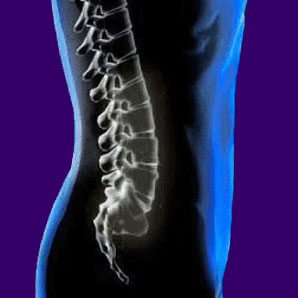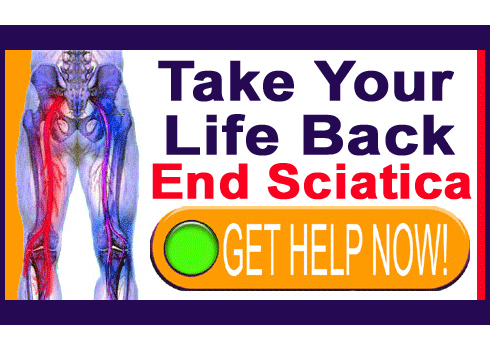
Chiropractic for sciatica uses hands-on spinal manipulation to relieve pain without drugs or surgery. Chiropractors are spinal specialists, so it makes sense that many doctors focus on treating sciatic nerve pain that is sourced in the lower areas of the vertebral column. However, some symptoms are not caused by true sciatica, but instead originate from nonspinal sources, qualifying them to be called pseudo-sciatica. Chiropractors can also treat most of these types of pain, as well.
Sciatica is well known to be a debilitating and chronic pain syndrome that often scoffs at traditional treatment attempts. We speak to many patients each week who report having tried virtually everything to combat their sciatica, without any positive lasting results. It is due to the stubborn nature of sciatica that we have researched so many medical, complementary and alternative therapy approaches and report on these practices throughout the sites of The Cure Back Pain Network.
This resource details the use of chiropractic care to treat acute or chronic versions of sciatica and pseudo-sciatica. We will examine the type of care that can be provided to sciatica sufferers by chiropractic practitioners, as well as explore the limitations and benefits of chiropractic for sciatica treatment.
Chiropractic for Sciatica from the Spine
True sciatica is motivated by chemical nerve interaction or neurological compression in the lumbar and lumbosacral spinal regions. The sciatic nerve is composed of fibers that originate from the L4, L5, S1, S2 and S3 nerve roots, so all true sciatica expressions are sourced from conditions that affect these nerve structures.
The most common reason for spinally motivated sciatica to occur is direct compression of one or more of these nerve tissues within the central vertebral canal, in the lateral recess or in the foraminal opening. Pinched nerves can be caused by osteoarthritic processes, intervertebral herniation, ligamentous hypertrophy, atypical spinal curvature or vertebral misalignments that undermine the patency of the central canal or foraminal openings.
Chiropractic for sciatica can seek to optimize spinal alignment in an attempt to increase the patency of these nerve passageways through manual manipulation. For some forms of nerve compression, such as those caused by herniated discs, chiropractic might provide adequate results. Chiropractic might also help to conservatively reduce the loss of patency caused by some forms of scoliosis, lordosis, kyphosis or spondylolisthesis to a very small degree. However, chiropractic is likely to be the least successful in cases of permanent stenotic change due to skeletal formation, such as osteophytes, facet arthrosis, ligamentous ossification and other conditions that might permanently reduce the space in the central vertebral or neuroforaminal canals.
Sciatica can also be caused by chemical nerve irritation due to a ruptured intervertebral disc and the subsequent loss of nucleus proteins. These proteins contain the substance known as tumor necrosis factor alpha, which is known to be a neurological irritant for many people. When this protein migrates out of a damaged spinal disc, it might make contact with a nearby spinal nerve and cause pain. Chiropractic is unlikely to provide any benefit for these types of chemical radiculitis sciatica scenarios.
Chiropractic for Pseudo-Sciatica
Pseudo-sciatica describes symptoms that are not sourced from the compression or irritation of the 5 lumbar and sacral nerve roots that make up the sciatic nerve. This broad definition can include a variety of painful conditions that involve the sciatic nerve including:
Central spinal stenosis in the neck or upper back can affect the nerve tissue tracts that eventually go on to form the sciatic nerve. Many sciatica cases are actually caused by cervical spinal stenosis, but are typically unjustly blamed on incidental lumbar abnormalities. In some cases, chiropractic can help to improve the stenotic conditions that are creating symptoms, as long as they are identified and carefully treated. Some cervical stenosis can increase risks of chiropractic treatment, as cited by many patients who have been injured by their chiropractor.
The fully formed sciatic nerve can also suffer compression or injury. This might occur due to piriformis syndrome or some other causation. Some chiropractors specialize in piriformis muscle pain and claim to provide benefits using various types of skeletal and soft tissue manipulations.
Diabetes can cause pseudo-sciatica, but will certainly not respond to chiropractic spinal adjustments.
Sacroiliac joint problems can also source sciatica-like pain syndromes. When properly diagnosed, most chiropractors will attempt to treat these conditions as well, using specialized SI joint manipulations.
Medical Opinions Regarding Chiropractic for Sciatica
Chiropractic is partially to wholly holistic, generally safe and enjoys positive patient satisfaction ratings. Chiropractors do not subscribe to the idea of using drugs or surgery to manage back pain, which makes them virtual heroes in our book. However, chiropractic is limited in the conditions it can treat and some patients actually do require surgery in order to recover.
Many medical care providers question the efficacy of chiropractic for providing any positive results for any health issue or wellness application. They claim that manual manipulation of the spinal bones is impossible given the force generally utilized by chiropractors and if the force were markedly increased to elicit actual change of vertebral positioning, then anatomical injury would certainly result. Most of these doctors cite any positive outcomes experienced by patients are due to placebo effect alone and certainly not any actual inherent efficacy of chiropractic itself.
Other physicians might not completely understand how chiropractic for sciatica works, but support it as a complementary method of care that allows patients to avoid the use of dangerous prescription drugs or risky surgical interventions. These doctors really do not seem to care how or why chiropractic works, just that patients seem to benefit and can therefore bypass more hazardous methods of treatment for their sciatica. Still other physicians are actually chiropractors themselves and embrace both the traditional and complementary points of view offered by their dual vocational paths.
Many doctors now realize that sciatica can be a form of tension myoneural syndrome. In these cases, chiropractic suffers from the same poor results as any physical treatment modality, since the source of the pain is of mindbody origin. The only way to resolve these common conditions is with the application of proper knowledge therapy techniques. Doctors of mindbody medicine focus on treating these chronic issues using completely safe and constructive methods of care, instead of the rule of dangerous symptom-based care regimens. Recently, more and more chiropractors are joining the fight against psychogenic pain by offering knowledge therapy instruction to complement their physical adjustments and manipulations. We are delighted by this progress forward.





